Botanical name : Basella alba
Synonyms : Basella rubra (now considered a cultivar of B. alba)
Common name : Malabar spinach, Ceylon spinach, Indian spinach
Easy for seed saving
Lifecycle: Perennial, grown as an annual in cool climates
Pollination: Self pollinating
Mating system: Perfect flowers
Suggested spacing: Same as for eating production
Seed specific requirements: Long warm growing season
Isolation distance: None
Population size: 5 plants or more
Seed maturity: When the fruit has turned black
Processing method: Wet or dry processing
Expected seed viability: 5 years
Images
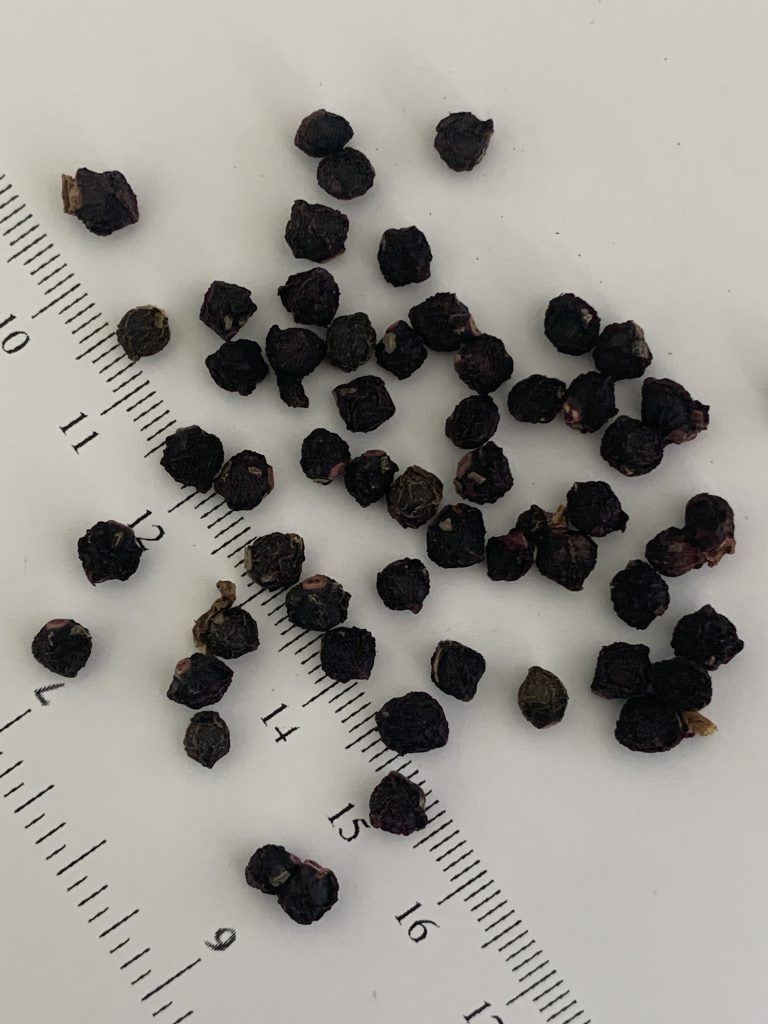
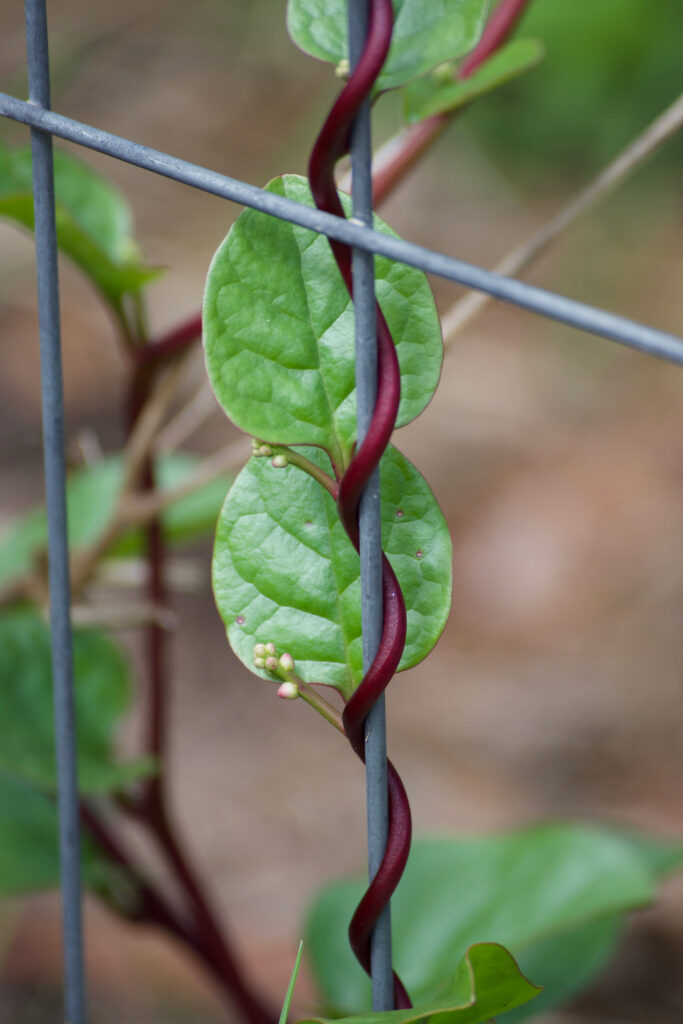
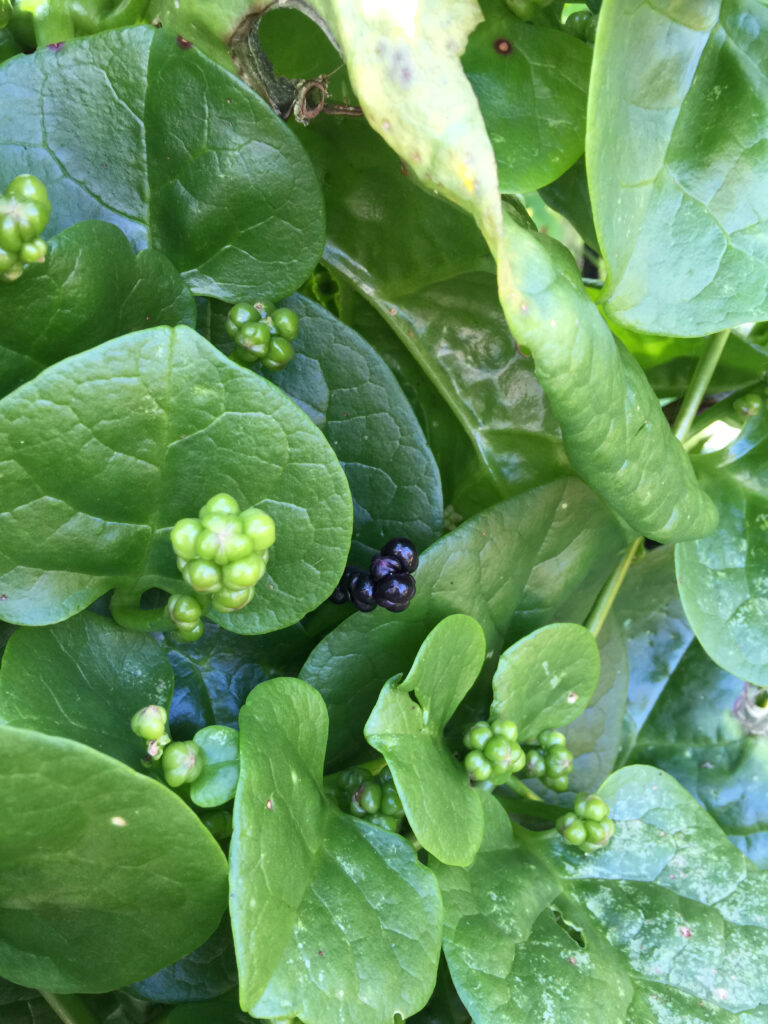
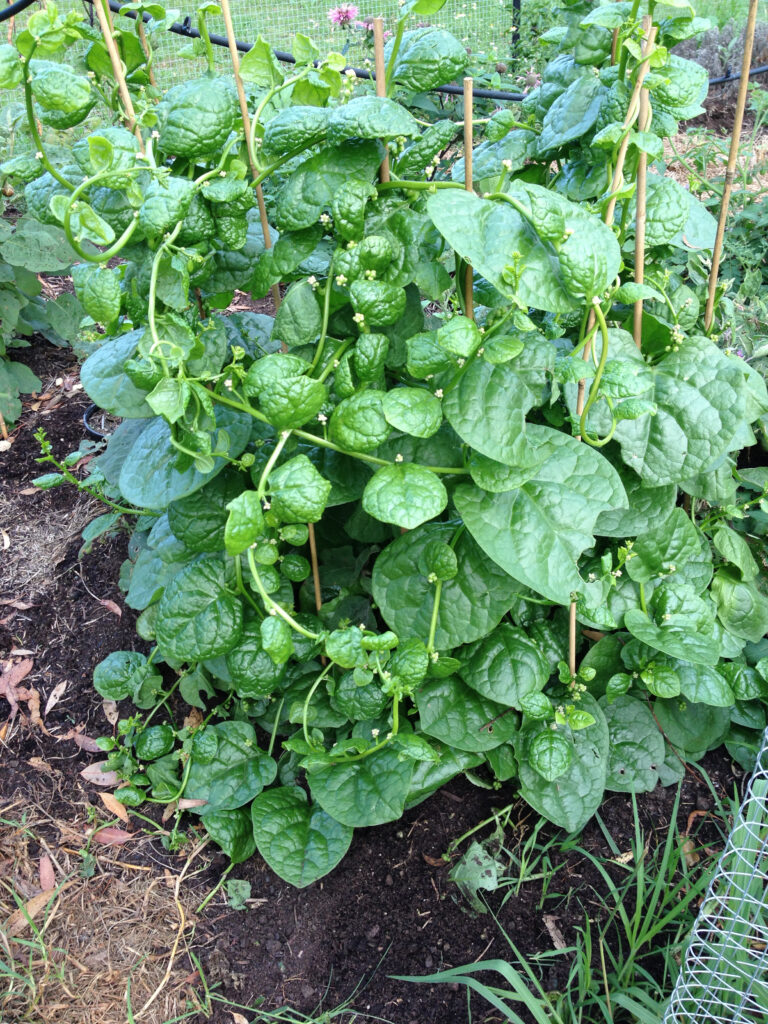
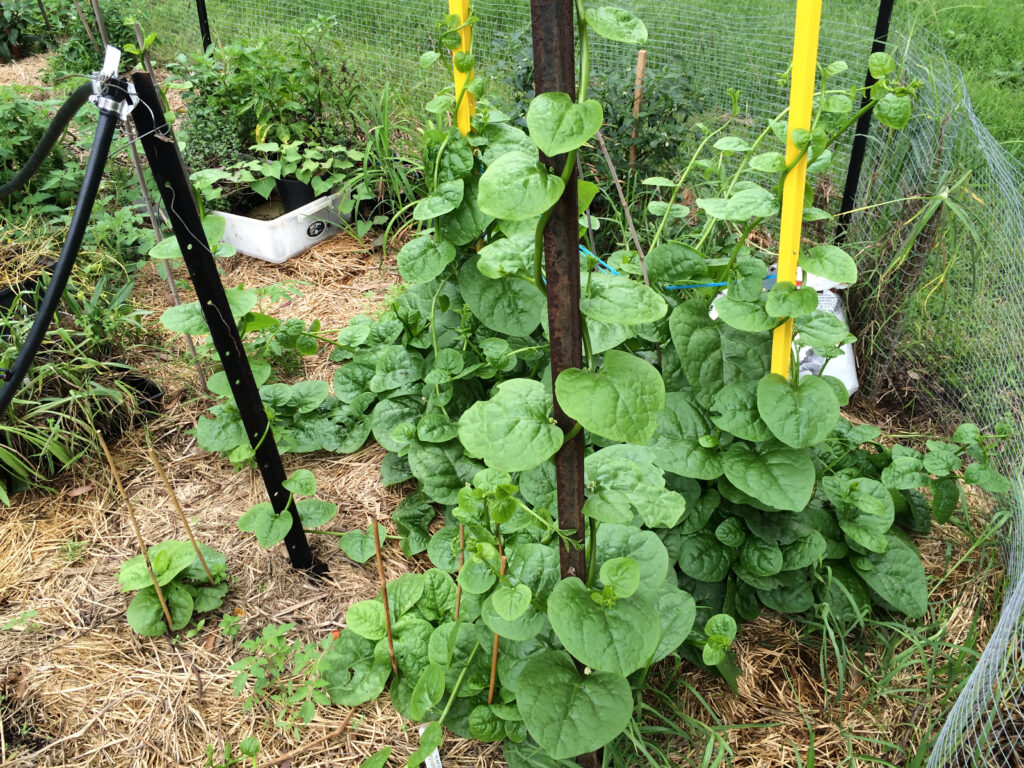
Growing for seed
Basella is frost tender and needs a warm growing season to thrive. In southern areas it is started in spring and will form flowers and seeds towards the end of the summer. In tropical and sub-tropical areas it is grown as a perennial. It can be grown along the ground but is usually grown up a small trellis to around 1m.
Selection
Plants can be selected on the basis of leaf form and stem colour. Home growers generally only need to select on the basis of healthy disease-free plants.
Harvest
Individual fruits are picked when they turn black. They can be picked as soon as they are ripe fleshy fruits or left to dry on the vine and picked off as dried little black balls.
Processing
Basella fruit can be processed to remove the flesh from around the seed or simply spread out to dry with the fruit intact around the seed. Leaving the fruit on the seed increases the drying time significantly and, in some climates, may risk mould forming.
If it is more convenient to remove the flesh, then it can be done by mashing the fruit to release the seed. The unwanted flesh can be easily decanted off once the seeds sink. If large quantities are being cleaned, they can be placed in a food processor with copious amounts of water. A few short pulses should separate the seed and flesh. Smaller quantities can simply be squashed between fingers or mashed with a pestle through a sieve.
Uses
The fruit contains a purple juice. It is non-toxic and while it can be hard to wash off initially it does not last. It’s a dye that children can safely play with. It has been used in cosmetics and as a food dye. But it is not useful as a fabric dye as it cannot be fixed to fabric.
Leaves are eaten both raw in salads and lightly cooked.
Contributors
Liz Worth, Nellie Pryke
